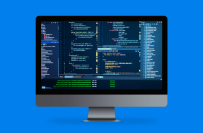
Develop MVP for Open-Source Nursing Job Management App with Payment Integration
$500-1000 USD
Κλειστή
Αναρτήθηκε 3 μήνες πριν
$500-1000 USD
Πληρωμή κατά την παράδοση
Here’s a complete breakdown of how the CNA and Nurses app can be developed, integrating all key features, including shift management, payment via escrow, and geolocation-based tracking for workers:
1. User Roles and Authentication
Roles:
Workers (CNAs, HHAs, Nurses): They will use the app to view and apply for shifts, track their earnings, clock in/out using geolocation, and manage their profiles.
Facilities (Nursing Homes, Hospitals, Group Homes): Can post shifts, manage job postings, track worker attendance via geolocation, and verify shifts for payment release.
Admin: Oversees the platform operations, manages disputes, monitors escrow accounts, and handles worker and facility profiles.
Authentication: Implement secure login and registration using OAuth or JWT tokens, supporting different roles. Each user will have a specific dashboard based on their role (worker, facility, or admin).
2. Escrow and Payment Management
Escrow Mechanism:
Facilities deposit funds into an escrow account when posting shifts.
When a worker accepts the shift, the platform holds the funds until the shift is verified as completed.
After the facility verifies the shift, the payment is released to the worker from the escrow account.
A $0.50 fee per hour booked is deducted from the worker's earnings.
Payment Gateway Integration: Use Stripe, PayPal, or similar services to handle:
Deposits from facilities into escrow accounts.
Releasing payments to workers after shift completion.
Charging the platform fee automatically.
3. Shift Posting and Management
Shift Posting:
Facilities can create and post shifts with details such as required certifications (CNA, HHA, Nurse), pay rate, shift duration, and job location (latitude and longitude).
Facilities will deposit funds into escrow when posting the shift.
Shift Notifications: Workers receive push notifications or alerts when shifts matching their criteria (e.g., location, certification) are posted.
Shift Acceptance: Workers can view available shifts and apply for or accept them. Once accepted, the shift will be confirmed and assigned.
4. Geolocation Tracking and Clock-In/Out System
Geofencing for Shift Clock-In:
Facilities must specify the exact location of the shift using coordinates (latitude and longitude).
A geofence (e.g., 100-200 meters) will be set up around the facility’s location.
Workers can only clock in for their shift if they are physically within this geofenced area. The system will use the worker’s mobile phone GPS to verify this.
When workers attempt to clock in, their location will be checked in real-time. If they are outside the geofence, they will not be allowed to log in and will receive an alert.
Geolocation API:
Use Google Maps API or similar for setting up geofences and real-time tracking.
Use the React Native Geolocation API to track worker movement within the app.
Clock Out Verification:
Workers must clock out using the app after completing their shift.
The platform will again verify their location to ensure they are on-site before clocking out.
Location Services Permission: Workers will need to enable location services on their devices to log in and clock in/out.
5. Worker Dashboard
Shift Overview: Workers can view upcoming shifts, completed shifts, and available shifts that match their location and qualifications.
Earnings Tracking: Workers can view their total earnings, pending payments, and payment history.
Geolocation Tracking: Workers can track their distance from the job site and receive alerts when they enter or exit the geofence.
Clock In/Out Button: This feature will only be enabled when the worker is on-site.
Tax Management: Since the platform does not handle taxes, workers will be responsible for filing their own taxes. The dashboard will include downloadable payment summaries to help with tax filing.
6. Facility Dashboard
Shift Posting: Facilities can post shifts, specifying details like location, pay rate, and required certifications.
Worker Tracking: Facilities can view whether workers have clocked in and clocked out from the job site using the geolocation feature.
Shift Verification: After the worker completes the shift, the facility must verify the hours worked, either through manual confirmation or automated clock-out logs.
Escrow Management: Facilities can track escrow deposits and how funds are released upon shift completion.
7. Admin Panel
Dispute Resolution: Admins can manage disputes between workers and facilities, such as disagreements over shift verification or payment release.
Escrow Oversight: The admin can monitor escrow accounts and track the flow of funds between facilities and workers.
Platform Analytics: Admins will have access to data such as total shifts posted, total hours worked, worker ratings, and platform fees collected.
8. Technology Stack
Frontend:
React Native for cross-platform mobile app development (iOS and Android).
Geolocation and Maps: Use Google Maps API and React Native Geolocation for location services.
Backend:
Node.js with Express or Django for managing user authentication, shift posting, escrow, and payments.
WebSocket or Firebase for real-time notifications (e.g., new shifts posted, worker geolocation updates).
Database:
PostgreSQL or MongoDB to store user profiles, shifts, and transaction data.
Store geolocation data as logs for auditing purposes (e.g., clock-in/out locations).
Payment Gateway:
Stripe, PayPal, or Braintree for managing escrow accounts, worker payments, and platform fees.
Cloud Hosting:
AWS, Google Cloud, or Firebase for scalable cloud infrastructure, hosting, and real-time services.
Example Workflow:
1. Facility Posts Shift: The facility provides shift details, including location and escrow deposit.
2. Worker Accepts Shift: A worker accepts the shift and sees the geolocation boundary for the job.
3. Worker Arrives On Site: The worker’s location is verified via GPS. If they are within the geofence, they can clock in using the app.
4. Worker Completes Shift: The worker clocks out, and their location is again verified.
5. Facility Verifies Shift: The facility confirms the shift was completed, and the payment is released from escrow.
6. Worker Gets Paid: The platform deducts $0.50 per hour booked and releases the remaining funds to the worker.
This complete workflow integrates seamless shift management, geolocation tracking, escrow-based payments, and a clear separation of responsibilities for both facilities and workers. Let me know if you'd like more details on any specific area!
Ταυτότητα εργασίας: 38673772
Σχετικά με την εργασία
105 προτάσεις
Απομακρυσμένη Εργασία
Ενεργός/ή 1 μήνας πριν
Ψάχνεις τρόπο για να κερδίσεις μερικά χρήματα;
Πλεονεκτήματα πλειοδοσίας στο Freelancer
Καθόρισε τον προϋπολογισμό σου και το χρονοδιάγραμμα
Πληρώσου για τη δουλειά σου
Περίγραψε την πρόταση σου
Η εγγραφή και η πλειοδοσία σε εργασίες είναι δωρεάν
105 freelancers δίνουν μια μέση προσφορά $991 USD για αυτή τη δουλειά

4,9
(110 αξιολογήσεις)
8,7
8,7

5,0
(204 αξιολογήσεις)
8,1
8,1

4,9
(87 αξιολογήσεις)
7,4
7,4

4,9
(34 αξιολογήσεις)
7,2
7,2

5,0
(120 αξιολογήσεις)
6,9
6,9

5,0
(105 αξιολογήσεις)
6,6
6,6

5,0
(14 αξιολογήσεις)
6,3
6,3

4,9
(27 αξιολογήσεις)
6,5
6,5

5,0
(34 αξιολογήσεις)
6,2
6,2

5,0
(34 αξιολογήσεις)
5,9
5,9

5,0
(5 αξιολογήσεις)
5,6
5,6

4,5
(7 αξιολογήσεις)
6,2
6,2

5,0
(4 αξιολογήσεις)
5,0
5,0

5,0
(1 αξιολόγηση)
4,9
4,9

4,8
(10 αξιολογήσεις)
5,3
5,3

4,5
(9 αξιολογήσεις)
5,3
5,3

4,7
(38 αξιολογήσεις)
5,3
5,3

5,0
(4 αξιολογήσεις)
5,0
5,0

5,0
(5 αξιολογήσεις)
4,3
4,3

5,0
(2 αξιολογήσεις)
4,3
4,3
Σχετικά με τον πελάτη

Boston, United States
0,0
0
Μέλος από Απρ 28, 2024
Επαλήθευση Πελάτη
Άλλες δουλειές από αυτόν τον πελάτη
$750-1500 USD
$250-750 USD
$250-750 USD
$250-750 USD
$250-750 USD
Παρόμοιες εργασίες
$250-750 USD
₹37500-75000 INR
€30-250 EUR
$10-30 USD
₹600-1500 INR
₹1500-12500 INR
$10-30 USD
₹1500-12500 INR
$30-100 USD
$250-750 USD
₹600-1500 INR
$30-250 USD
€250-750 EUR
$750-1500 USD
₹75000-100000 INR
₹12500-37500 INR
₹750-1250 INR/ ώρα
€18-36 EUR/ ώρα
₹600-1500 INR
₹1500-12500 INR
Ευχαριστούμε! Σου έχουμε στείλει ένα email με ένα σύνδεσμο για να διεκδικήσεις τη δωρεάν πίστωση σου.
Κάτι πήγε στραβά κατά την προσπάθεια αποστολής του email σου. Παρακαλούμε δοκίμασε ξανά.
Φόρτωση προεπισκόπησης
Δόθηκε πρόσβαση για Geolocation.
Η σύνδεση σου έχει λήξει και τώρα έχεις αποσυνδεθεί. Παρακαλούμε συνδέσου ξανά.



























